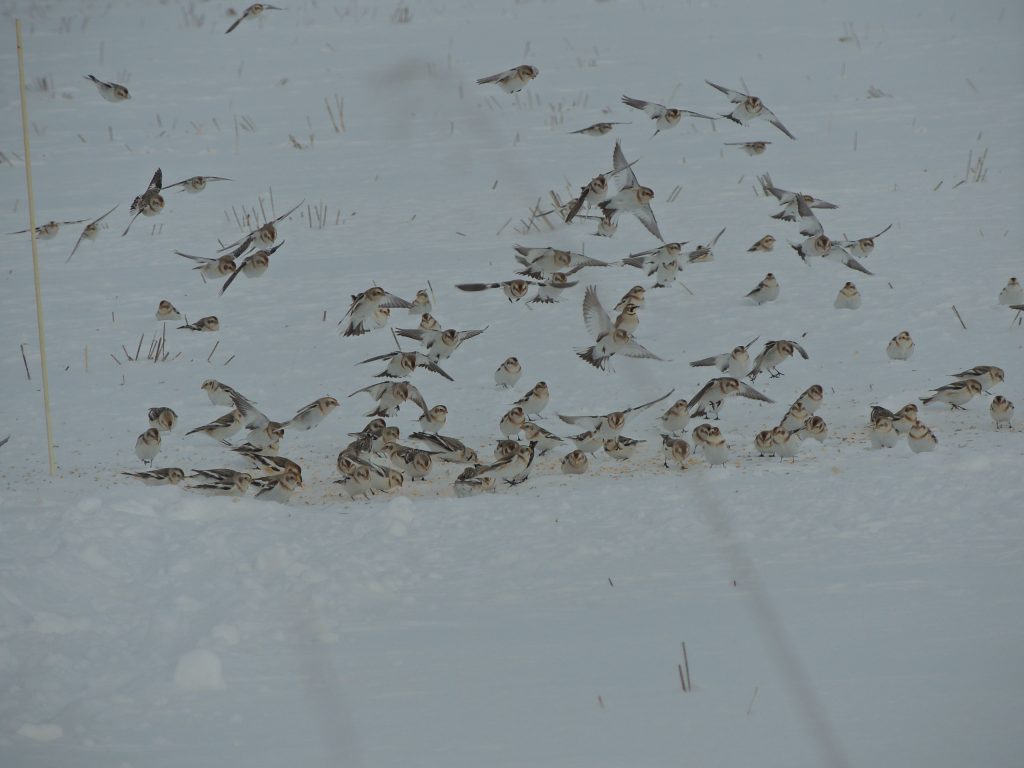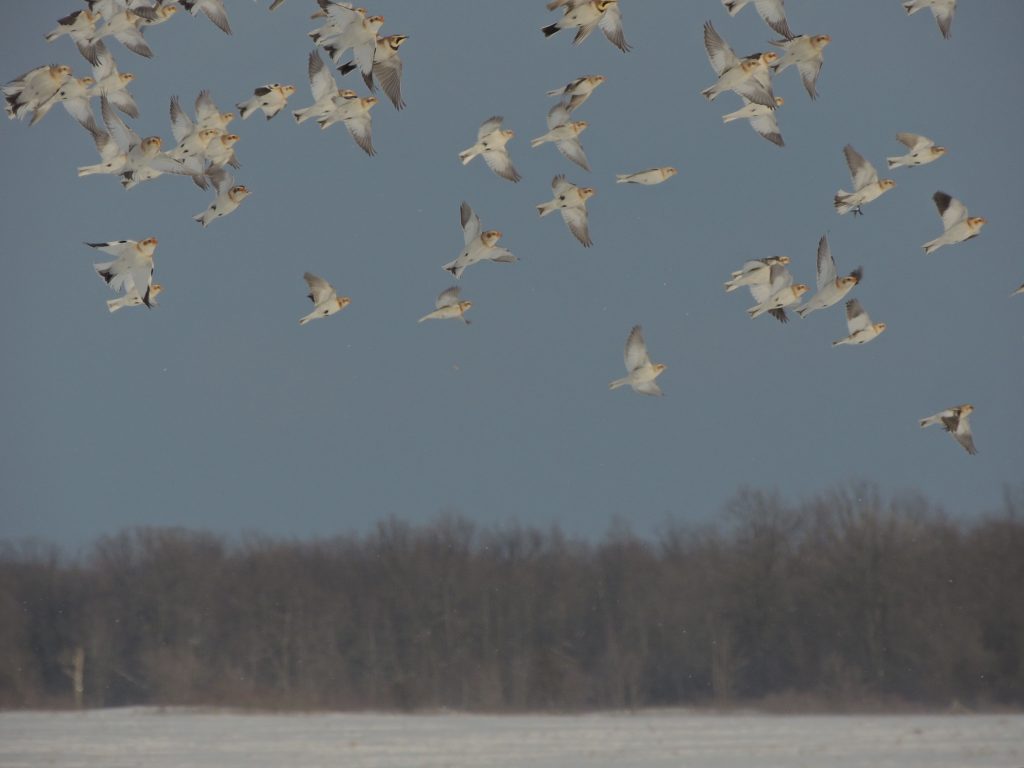February 8 2018. Hagersville, ON. On a snowy, mid-winter afternoon three, I’ll call them life-experienced, men took the afternoon off to go birding. The end goal, if we were lucky, was to see Short-eared Owls – and we did; so perhaps that’s a good place to start. Under a darkening dusk sky, tinged along the western edge with orange and swept by a cutting wind, we spotted two and perhaps three Short-eared Owls swooping and hunting over scrubby, hawthorn-dotted, grassland. Although we had half expected to see them we were deeply awed, Short-eared Owls are a rare treat and our oohs, aahhs and wows were heartfelt. They were exciting and lovely, conclusively Bird of the Day for two of us, but I found myself searching my soul on this point. Really, after an hour of magical, tumbling flocks of Snow Buntings just an hour or so earlier, could Short-eared Owls be any better?
You see, at the front end of our journey we had pulled to the side of a snow-drifted country road, to watch a couple of large flocks of Snow Buntings feeding on scraps of leftover corn. Together with the buntings there was also a dozen or two Horned Larks and one, just one, Lapland Longspur. They’d gather en-mass to feed busily for maybe a minute and then take off as if in a panic to sweep around in broad turns before returning to settle back down as if nothing had happened; we were mesmerized. Any birds not feeding would wriggle down into the fluffy snow until only their heads and backs were exposed.
In past winters I have spent hours at this very spot helping to capture and band Snow Buntings, so the spectacle wasn’t altogether novel, but it never loses its charm. And just four years ago, also at this very spot, I was frostbitten for my bunting-banding troubles, perhaps I deserved it.(For lots of Snow Bunting pictures click on this link.)
Snow Buntings thrive in the cold, they winter in the open grasslands and farm fields of the mid latitudes of North America, from coast to coast. Flocks sometimes move a hundred kilometres from day to day in their search for winter seeds. When spring approaches they head north to breed in the High Arctic where the snow still lingers. Early evidence suggests that buntings wintering here in southern Ontario return to Labrador and Greenland for the summer.

So there you have drama in the end and the beginning of the day – in that order, but there was lots more to it. As we drove quiet roads from one all-white site to another we saw at least five Rough–legged Hawks, spotted a group of Turkeys and the occasional American Kestrel. It was a day of highlights, two lifers and two Birds of the Day.

Once more a most enjoyable read; full of interest and hidden mystery. Congratulations Peter.
What a full day!

I dunno if anyone “deserves” frostbite though.